Experimental Study on the Properties of Mixed-Fiber Concrete Shield Tunnel Segments Subjected to High Temperatures
Abstract
1. Introduction
2. Test
2.1. Test Specimens
2.2. Loading Methods
2.3. Temperature, Displacement Measurement, and Horizontal Support Reaction Force
2.4. Fire Conditions
3. Results
3.1. Cracking Patterns
- (1)
- Segment RC−1
- (2)
- Segment RC—2
- (3)
- Segment HFRC−3
- (4)
- Segment HFRC−4
- (5)
- Segment HFRC−5
- (6)
- Comparative analysis
3.2. Concrete Temperature
3.3. Steel Bar Temperature
3.4. Deflection Behavior
3.5. Horizontal Support Reaction Force
4. Conclusions
- (1)
- The type of fiber and pre-loading have an important influence on crack development in concrete segments. Compared with undoped segments, cracks in segments with steel fibers and polypropylene fibers appear later, and the average crack spacing decreases. With the increase in the pre-loaded load, the number of cracks at a high temperature on the side of the segment increases significantly, and most of them are concentrated at the loading point.
- (2)
- Pre-loading has an important effect on the vertical deformation before and after the temperature rise. The initial load level has a great influence on the initial displacement and crack development. As the load level increases, so does the deformation after the temperature rise. Therefore, for segments with a deep buried depth, the steel bar at the bottom of the segment should be increased.
- (3)
- The existing fire protection code only takes temperature as the basis for determining the fire resistance limit of load-bearing structures in the tunnel, which is more one-sided and conservative, and the influence of the initial load level should be considered.
- (4)
- The horizontal support reaction force was affected by the preload and the fire condition, which shows the same trend as the furnace temperature. As the furnace temperature rises, the horizontal support reaction force increases.
Author Contributions
Funding
Institutional Review Board Statement
Informed Consent Statement
Data Availability Statement
Acknowledgments
Conflicts of Interest
References
- Schrefler, B.A.; Majorana, C.E.; Khoury, G.A.; Gawin, D. Thermo-Hydro-Mechanical Modeling of high performance concrete at high temperatures. Eng. Comput. 2002, 19, 787–819. [Google Scholar] [CrossRef]
- Kanda, T.; Tajima, H.; Morita, T.; Kishida, M. Study on the deformation and load bearing capacity of TBM shield tunnel lining in fire. In Underground Space Use: Analysis of the Past and Lessons for the Future; CRC Press: Boca Raton, FL, USA, 2005; Volume 2, pp. 793–799. [Google Scholar]
- Yan, Z.G. A Study on Mechanical Behaviors and Fireproof Methods of Tunnel Lining Structure during and after Fire Scenarios. Ph.D. Thesis, Tongji University, Shanghai, China, 2007. (In Chinese). [Google Scholar]
- Zhou, X.C. On-Site Fire Test of Special Highway Tunnel and Research on Fire Resistance of Lining Structure. Master’s Thesis, Central South University, Changsha, China, 2011. (In Chinese). [Google Scholar]
- Lai, H.P.; Wang, S.Y.; Xie, Y.L. Experimental research on temperature field and structure performance under different lining water contents in road tunnel fire. Tunn. Undergr. Space Technol. 2014, 43, 327–335. [Google Scholar] [CrossRef]
- Pan, D. Study on Mechanical Properties and Damage Laws pf Large Diameter Shield Tunnel Lining under Fire Scenario. Master’s Thesis, Beijing Jiaotong University, Beijing, China, 2018. (In Chinese). [Google Scholar]
- Zhang, Y.; Ju, J.W.; Zhu, H.; Yan, Z. A novel multi-scale model for predicting the thermal damage of hybrid fiber reinforced concrete. Int. J. Damage Mech. 2020, 29, 19–44. [Google Scholar] [CrossRef]
- Agra, R.R.; Serafini, R.; de Figueiredo, A.D. Effect of high temperature on the mechanical properties of concrete reinforced with different fiber contents. Constr. Build. Mater. 2021, 301, 124242. [Google Scholar] [CrossRef]
- Choumanidis, D.; Badogiannis, E.; Nomikos, P.; Sofianos, A. The effect of different fibres on the flexural behaviour of concrete exposed to normal and elevated temperatures. Constr. Build. Mater. 2016, 129, 266–277. [Google Scholar] [CrossRef]
- Serafini, R.; Dantas, S.R.; Salvador, R.P.; Agra, R.R.; Rambo, D.A.; Berto, A.F.; de Figueiredo, A.D. Influence of fire on temperature gradient and physical-mechanical properties of macro-synthetic fiber reinforced concrete for tunnel linings. Constr. Build. Mater. 2019, 214, 254–268. [Google Scholar] [CrossRef]
- Rambo, D.A.S.; Blanco, A.; de Figueiredo, A.D.; dos Santos, E.R.F.; Toledo, R.D.; Gomes, O.D.F.M. Study of temperature effect on macro-synthetic fiber reinforced concretes by means of Barcelona tests: An approach focused on tunnels assessment. Constr. Build. Mater. 2018, 158, 443–453. [Google Scholar] [CrossRef]
- Yan, Z.G.; Zhu, H.H.; Liang, L. Experimental study on mechanical performance of lining segments in fire accidents. J. Tongji Univ. Nat. Sci. 2012, 40, 823–828. (In Chinese) [Google Scholar]
- Yan, Z.G.; Zhu, H.H.; Ju, J.W. Behavior of reinforced concrete and steel fiber reinforced concrete shield TBM tunnel linings exposed to high temperatures. Constr. Build. Mater. 2013, 38, 610–618. [Google Scholar] [CrossRef]
- Luo, J.L.; Xu, Z.S.; Guo, X.J.; Zhang, Y. Experimental study on the explosive spalling and fire damage of the lining segment in tunnel construction. J. Saf. Environ. 2013, 13, 159–164. (In Chinese) [Google Scholar]
- Shen, Y.; Yan, Z.G.; Shen, A.D. Experimental study on the post-fire failure mode of RC and HFRC tunnel segments. Chin. J. Undergr. Space Eng. 2017, 13, 531–537. (In Chinese) [Google Scholar]
- Hua, N.; Khorasani, N.E.; Tessari, A.; Ranade, R. Experimental study of fire damage to reinforced concrete tunnel slabs. Fire Saf. J. 2022, 127, 103504. [Google Scholar] [CrossRef]
- Zhang, G.L.; Zhang, W.J.; Yu, G.L.; Lei, J.Y. Model test on thermomechanical coupling of shield tunnel lining under high fire temperature. China J. Highw. Transp. 2019, 32, 120–128. (In Chinese) [Google Scholar]
- GB/T 22082-2017; Reinforced Concrete Segments. Chinese National Standard: Beijing, China, 2017. (In Chinese)
- Serafini, R.; de La Fuente, A.; de Figueiredo, A.D. Assessment of the post-fire residual bearing capacity of FRC and hybrid RC-FRC tunnel sections considering thermal spalling. Mater. Struct. 2021, 54, 219. [Google Scholar] [CrossRef]
- Di Carlo, F.; Meda, A.; Rinaldi, Z. Evaluation of the bearing capacity of fiber reinforced concrete sections under fire exposure. Mater. Struct. 2018, 51, 154. [Google Scholar] [CrossRef]
- GB 50016-2014; Code for Fire Protection Design of Buildings. Chinese National Standard: Beijing, China, 2014. (In Chinese)

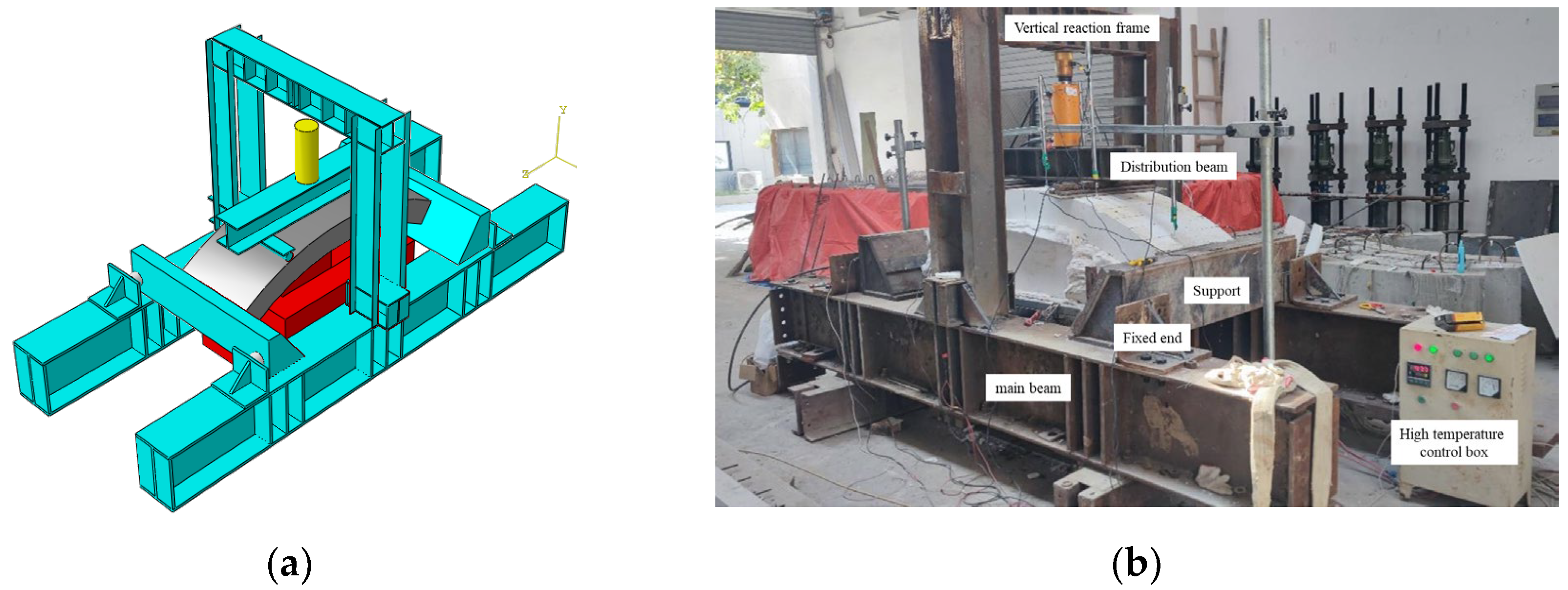


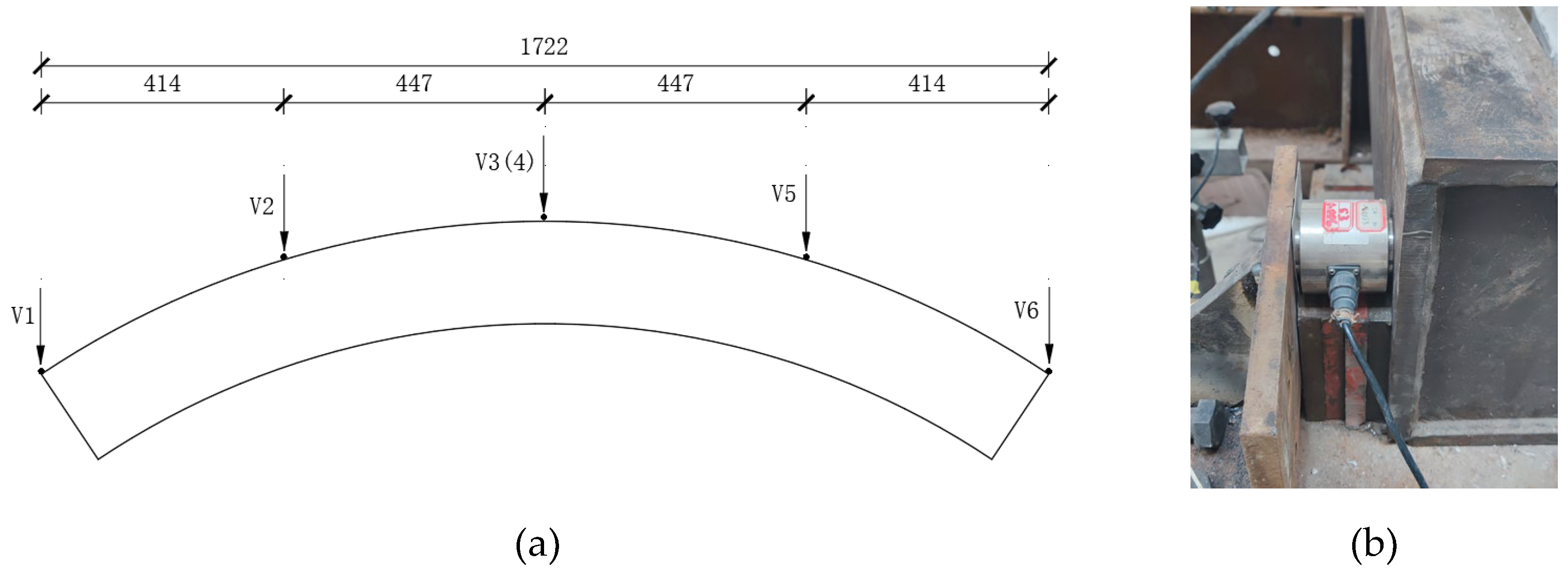


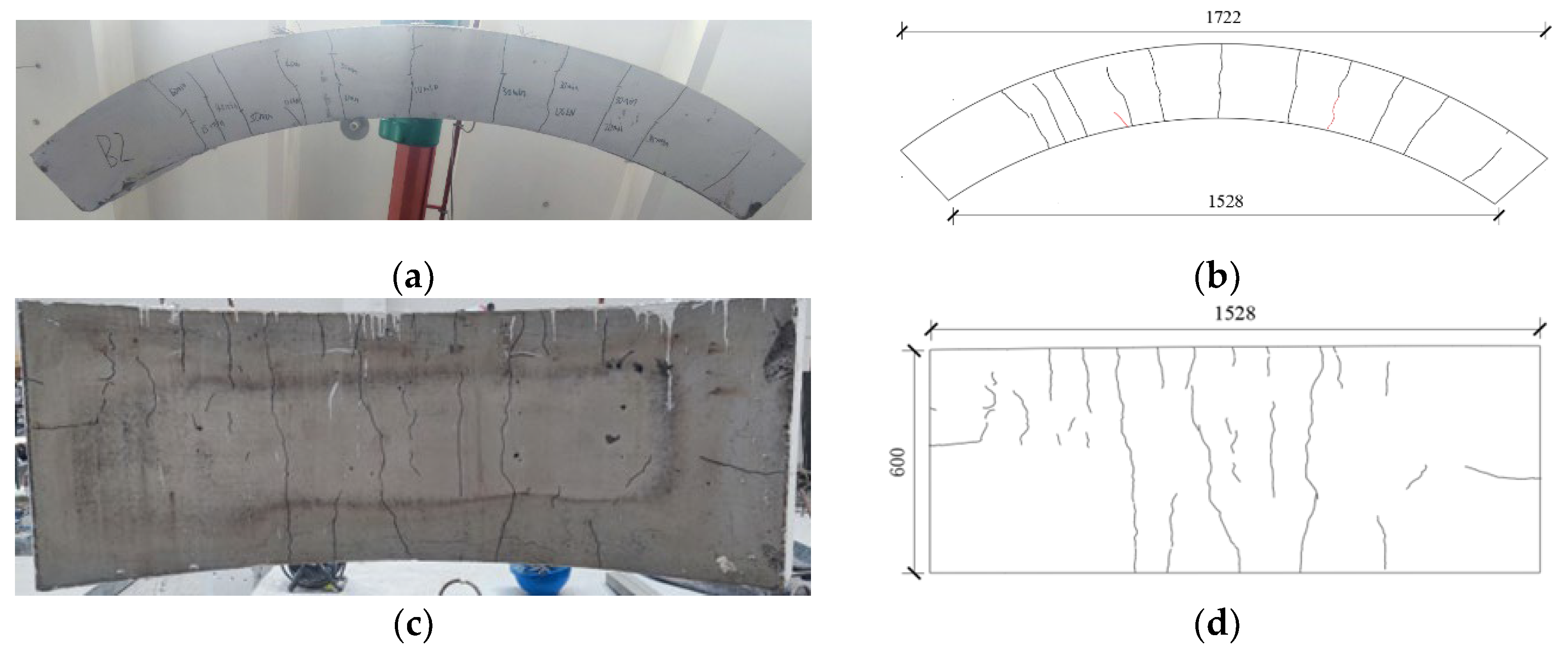
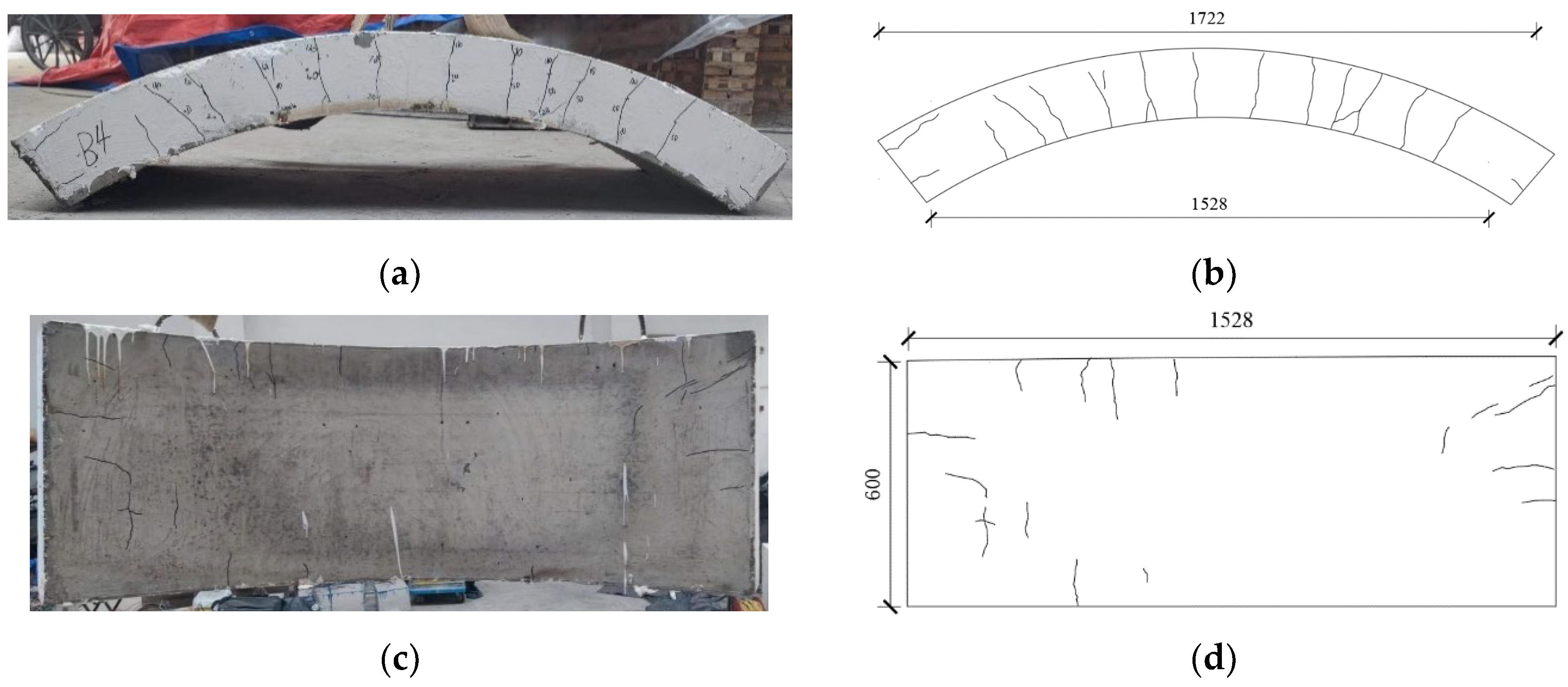
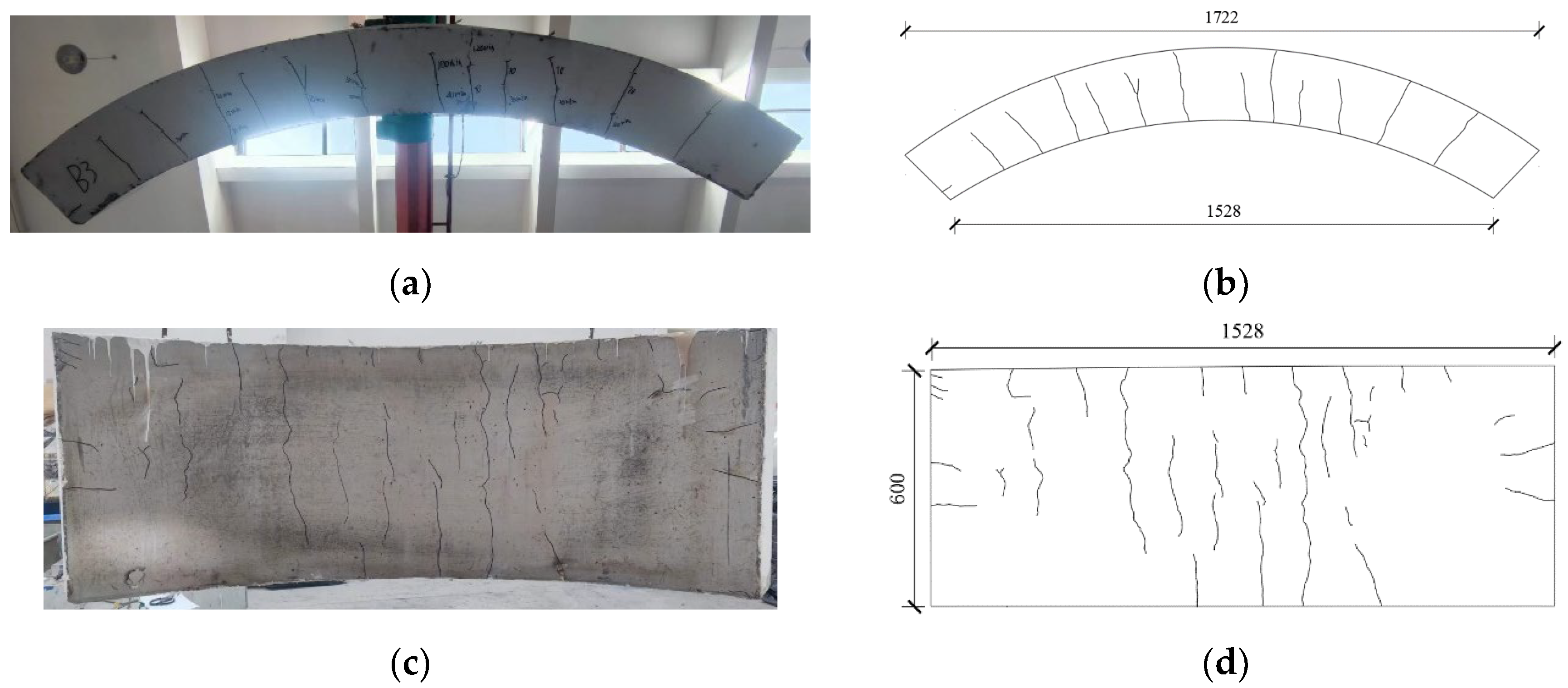
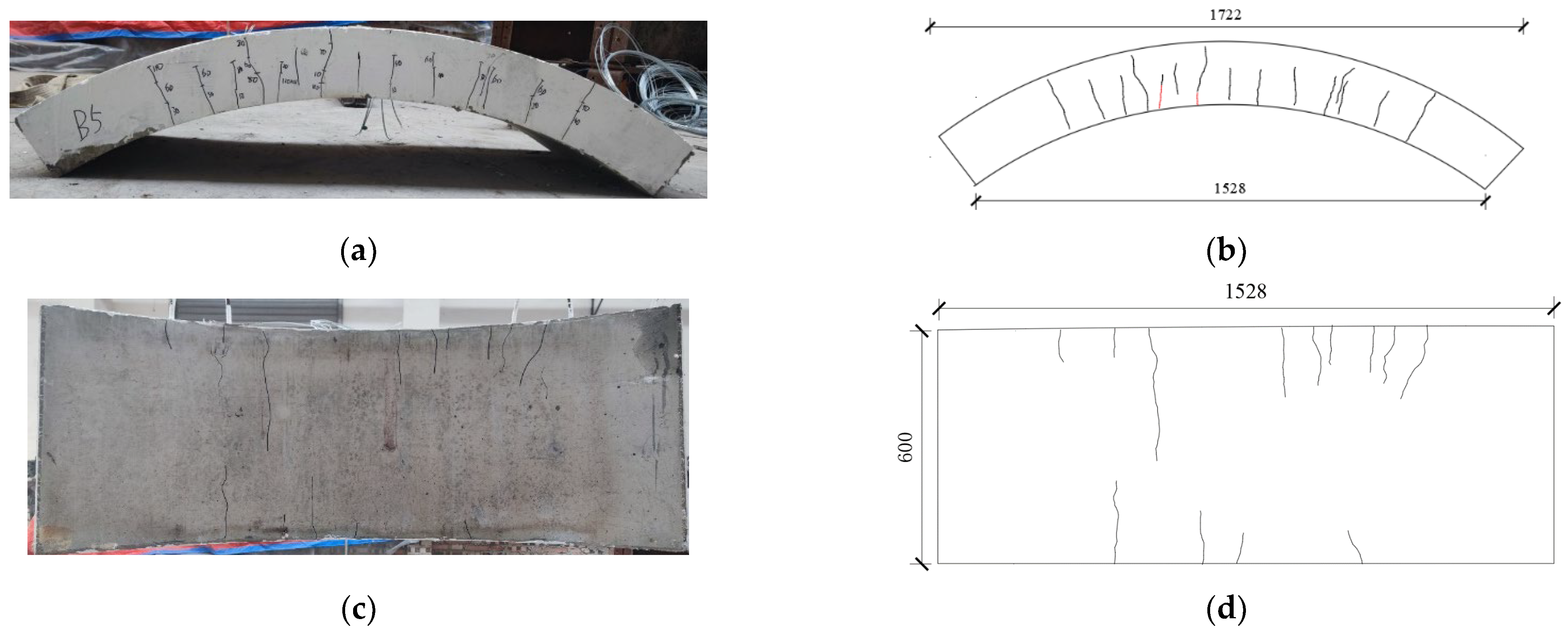
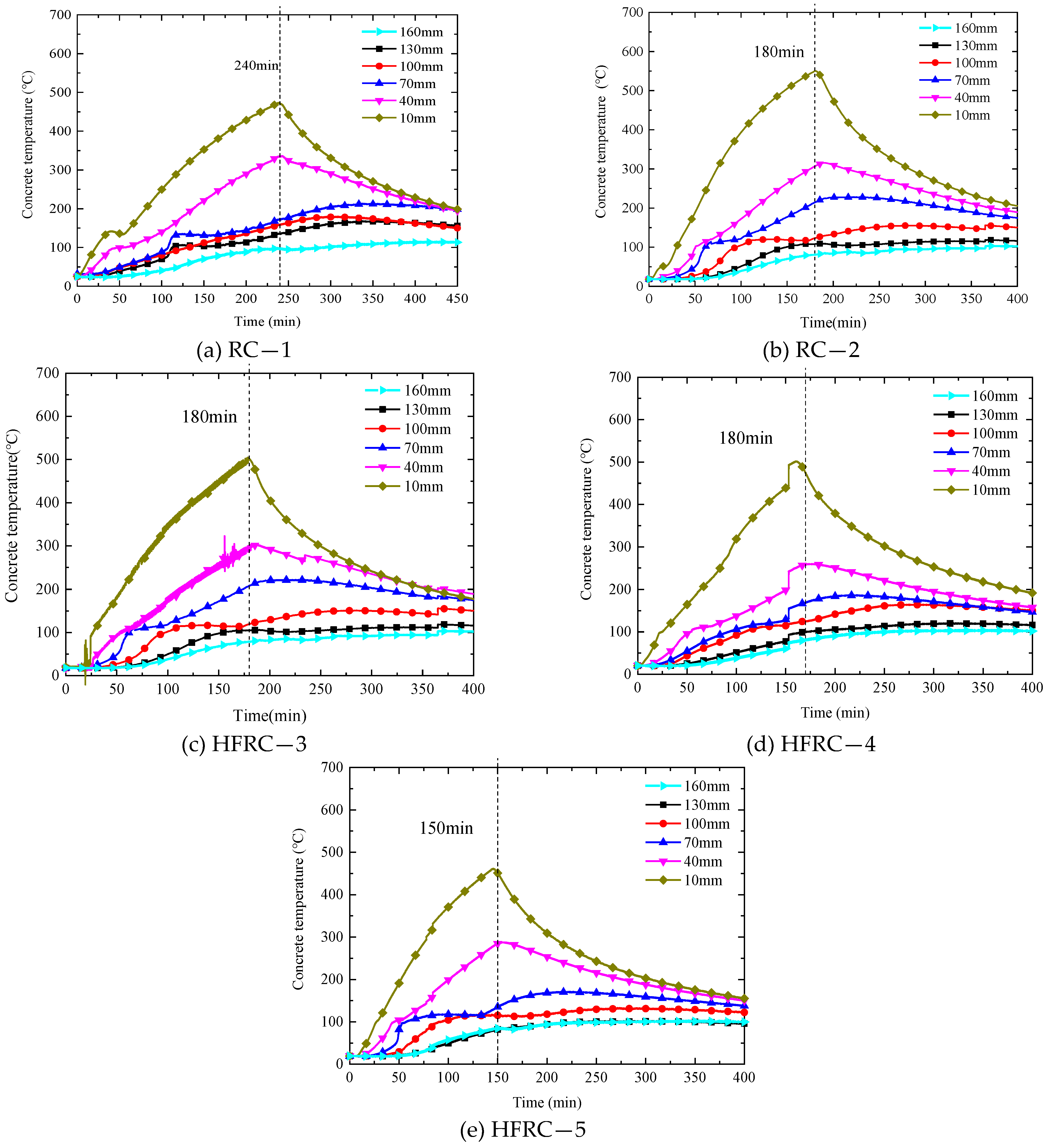
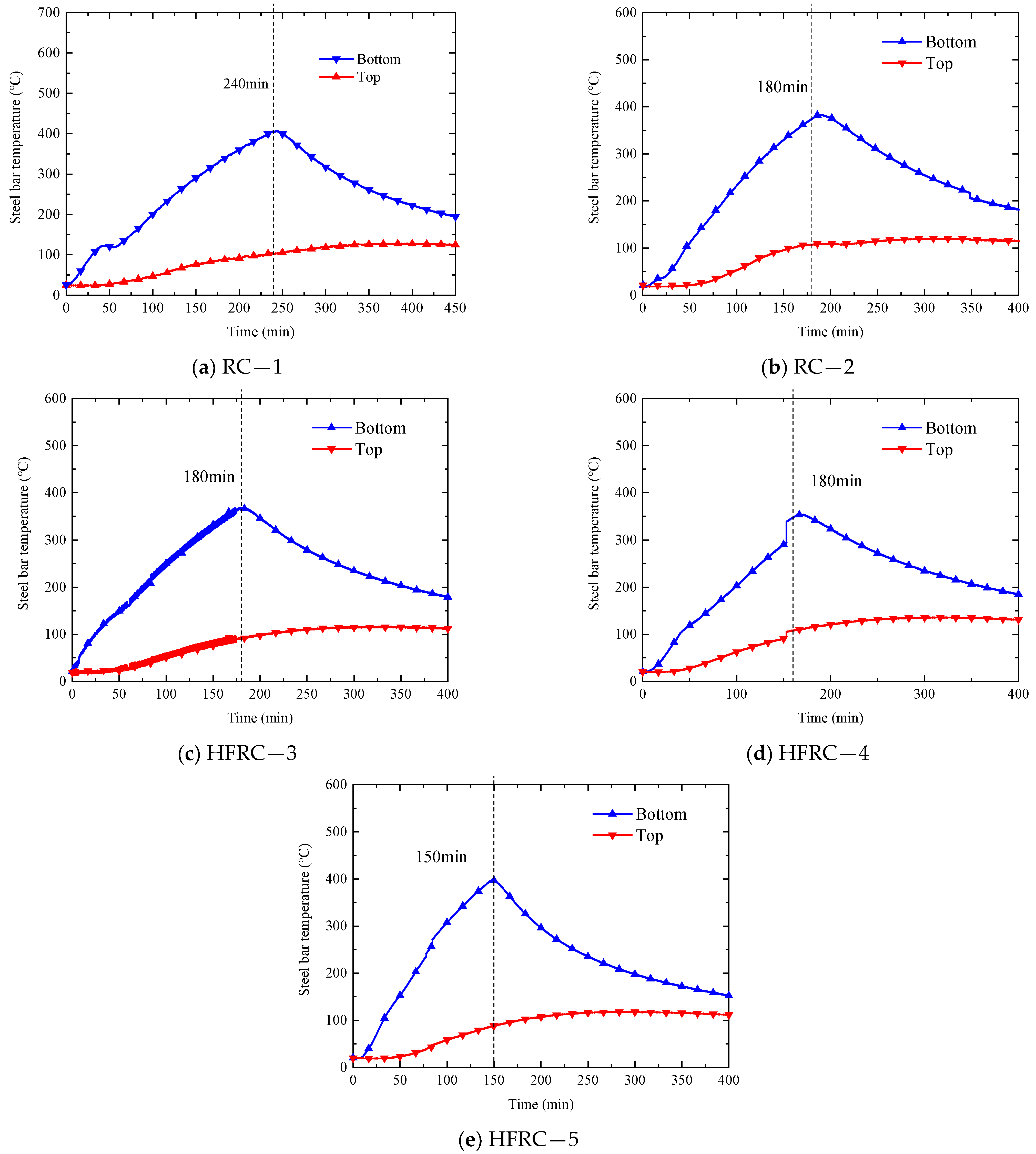
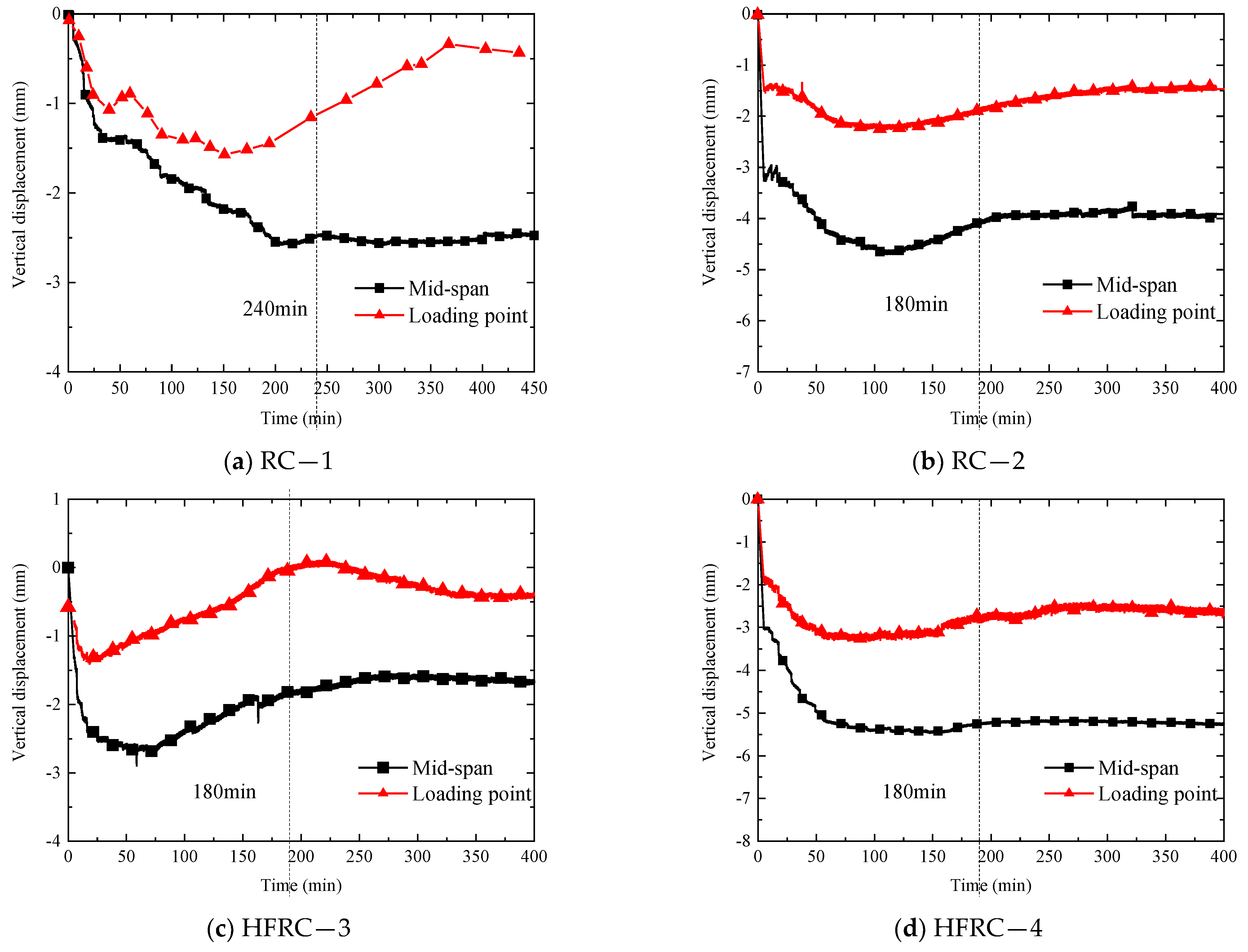


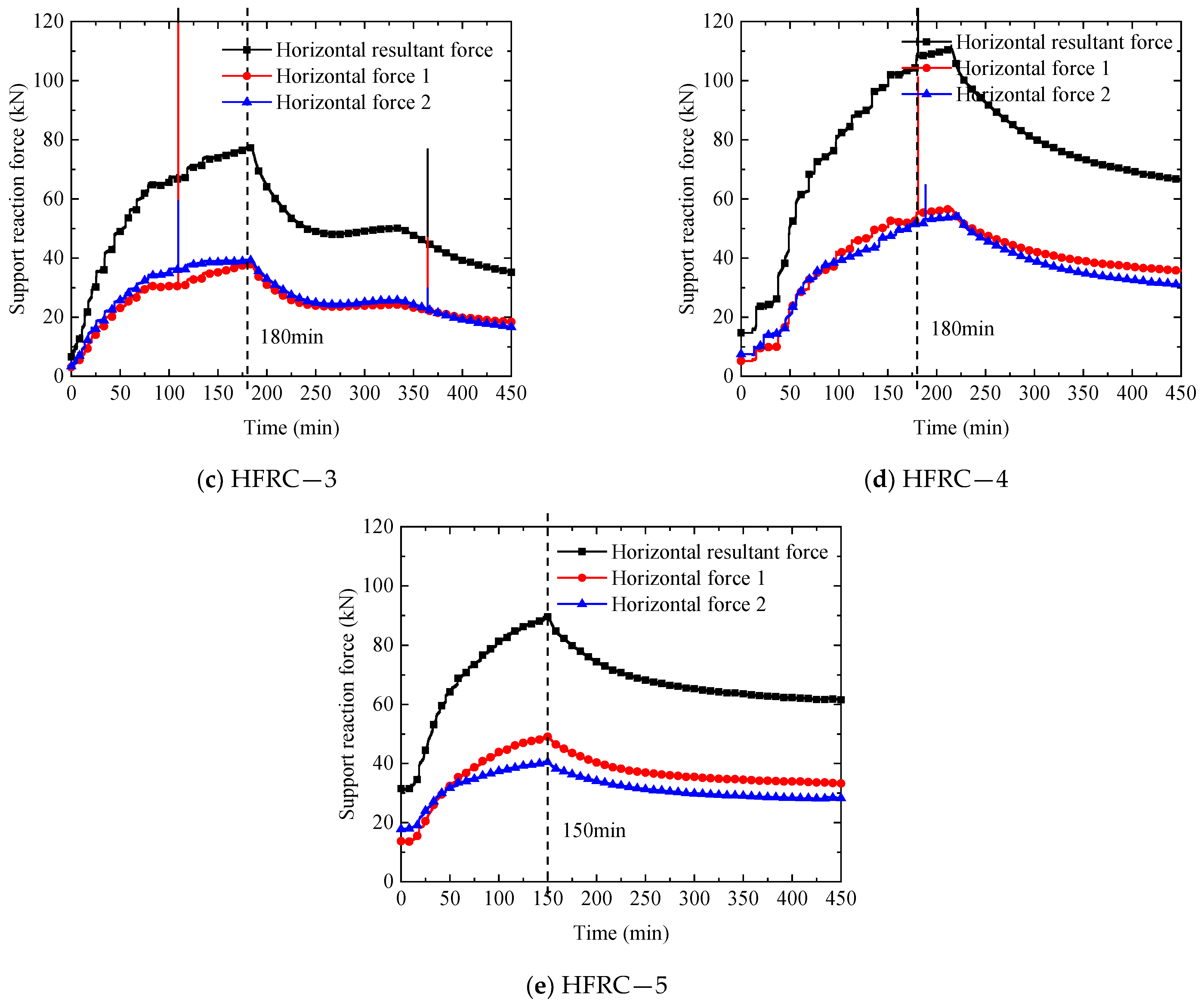
| Water | Cement | Sand | Aggregate | Fly Ash | Admixtures |
|---|---|---|---|---|---|
| 180 | 400 | 765 | 832 | 160 | 4.5 |
| ID | Pre- Loading(kN) (Pv) | Fire Duration | Maximum Temperature (°C) | Temperature at Ceasefire (°C) | Temperature at the End (°C) |
|---|---|---|---|---|---|
| RC—1 | 60 | 240 | 760 | 754 | 183 |
| RC—2 | 120 | 180 | 902 | 898 | 184 |
| HFRC—3 | 60 | 180 | 803 | 803 | 183 |
| HFRC—4 | 120 | 180 | 813 | 813 | 171 |
| HFRC—5 | 180 | 150 | 798 | 798 | 130 |
Disclaimer/Publisher’s Note: The statements, opinions and data contained in all publications are solely those of the individual author(s) and contributor(s) and not of MDPI and/or the editor(s). MDPI and/or the editor(s) disclaim responsibility for any injury to people or property resulting from any ideas, methods, instructions or products referred to in the content. |
© 2023 by the authors. Licensee MDPI, Basel, Switzerland. This article is an open access article distributed under the terms and conditions of the Creative Commons Attribution (CC BY) license (https://creativecommons.org/licenses/by/4.0/).
Share and Cite
Zhang, Y.; Wang, Y.; Ren, Z. Experimental Study on the Properties of Mixed-Fiber Concrete Shield Tunnel Segments Subjected to High Temperatures. Fire 2023, 6, 17. https://doi.org/10.3390/fire6010017
Zhang Y, Wang Y, Ren Z. Experimental Study on the Properties of Mixed-Fiber Concrete Shield Tunnel Segments Subjected to High Temperatures. Fire. 2023; 6(1):17. https://doi.org/10.3390/fire6010017
Chicago/Turabian StyleZhang, Yajun, Yao Wang, and Zhaoqing Ren. 2023. "Experimental Study on the Properties of Mixed-Fiber Concrete Shield Tunnel Segments Subjected to High Temperatures" Fire 6, no. 1: 17. https://doi.org/10.3390/fire6010017
APA StyleZhang, Y., Wang, Y., & Ren, Z. (2023). Experimental Study on the Properties of Mixed-Fiber Concrete Shield Tunnel Segments Subjected to High Temperatures. Fire, 6(1), 17. https://doi.org/10.3390/fire6010017








